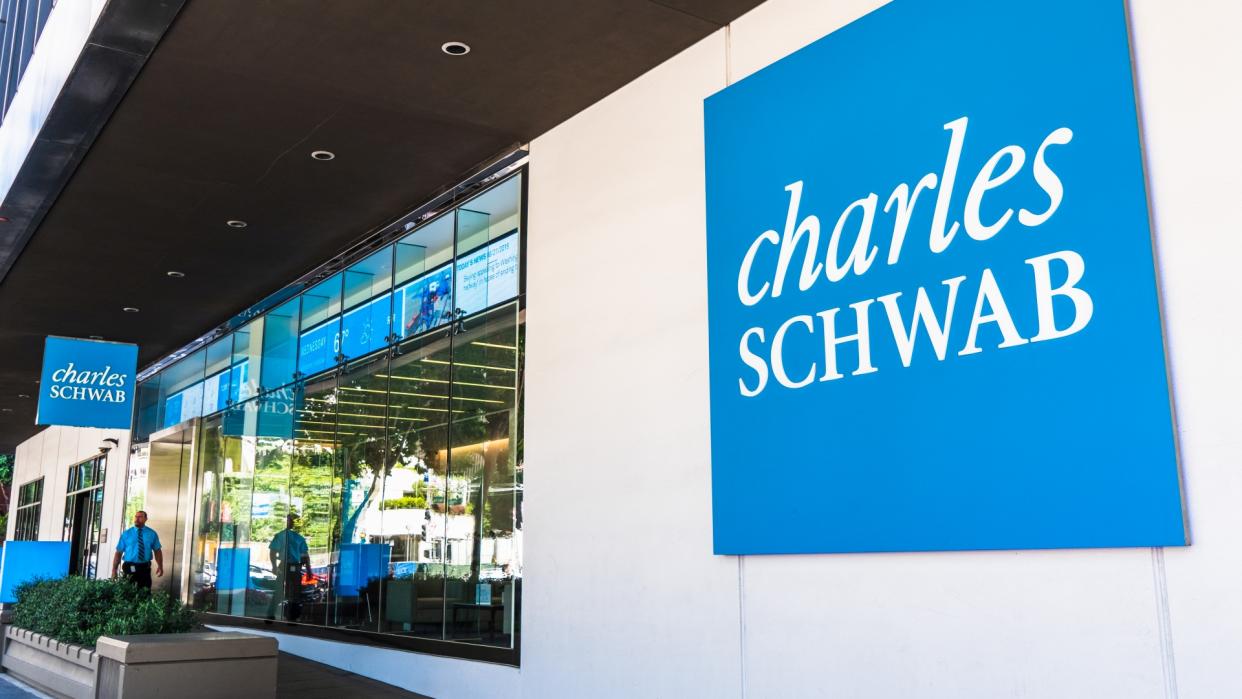Some of the Highest Rates for Savings Accounts Are No Longer Coming from Traditional Banks

Bank customers in search of the best savings account rates quickly learn that you won’t find them at most traditional brick-and-mortar banks. Instead, you need to look at online-only banks that aren’t stuck with expensive branch and labor costs and can therefore afford to offer better annual percentage yields.
Learn: Here’s How Much Money Experts Say You Should Have in Your Savings Account If You’re in Your 50s
More: How To Build Your Savings From Scratch
And it’s not just online banks that are trotting out competitive savings rates, either. The field has grown to include fintechs as well as companies with little connection to the banking industry at all. All are scrambling to offer the best savings rates in a market that has become increasingly crowded and competitive.
A recent GOBankingRates analysis of the best high-yield savings accounts for May 2023 placed TAB Bank at the top, with an APY of 4.76%. The list also includes online-only banks like Synchrony Bank and Vio, along with online banking subsidiaries of traditional financial companies, such as the CIBC Agility Online Savings Account and Marcus by Goldman Sachs.
Now Silicon Valley tech firms are getting in on the action — including Apple, which recently launched its Apple Card savings account. As CNBC reported, the account offers a 4.15% APY in partnership with Goldman Sachs.
Another player is stock trading app Robinhood, whose Robinhood Gold feature offers a 4.65% APY. Robinhood Gold lets you earn Interest on uninvested cash that is moved your brokerage account to partner banks, CNBC reported.
Here’s a look at other non-traditional banking options for high savings rates:
LendingClub, an online lender that offers a savings account with a 4.25% APY.
Upgrade, another online lender whose savings account offers a 4.56% APY for customers with a minimum balance of $1,000.
SoFi, a fintech with a banking charter that offers a savings account with a 4.2% APY.
This rush to offer the best savings rates might be good news for consumers — and good business for fintechs — but not all of the news for fintechs has been cheery of late. In March, Cross River Bank was issued a consent order by the FDIC alleging that the bank engaged in unsafe or unsound banking practices related to fair lending regulations, American Banker reported.
Cross River is a “banking-as-a-service” company that makes loans through fintechs. As American Banker noted earlier this month, Cross River neither admitted nor denied the charges. But the situation could have a ripple effect on all banks that partner with fintechs.
“It’s a shot across the bow for every partner bank, especially small ones,” Todd Baker, a Columbia University fellow and managing principal of Broadmoor Consulting, told American Banker. “If the largest and most sophisticated partner bank can get into this much trouble, every partner bank is at risk.”
The rise in bank-fintech partnerships even led Acting Comptroller of the Currency Michael Hsu to address the issue in a September speech.
Take Our Poll: Are You Concerned About the Safety of Your Money in Your Bank Accounts?
I’m a Financial Advisor: These Are the Worst Money Mistakes I See People Make
“He basically said, there’s been a lot of activity in this ‘banking as a service,'” Maria Gotsch, president and CEO of Partnership Fund for New York City, told American Banker. “We believe there’s risk in that to the system and we’re going to be putting out parameters around how we want that interaction to work. Banking as a service does not mean that you are outside of the regulatory purview and that you are not subject to the same standards regulations that we have for the large banks.”
More From GOBankingRates
This article originally appeared on GOBankingRates.com: Some of the Highest Rates for Savings Accounts Are No Longer Coming from Traditional Banks
